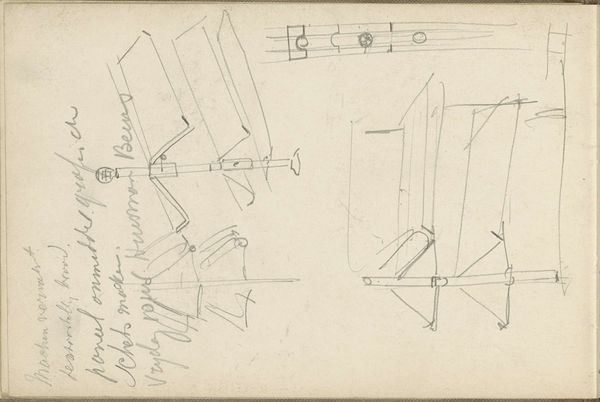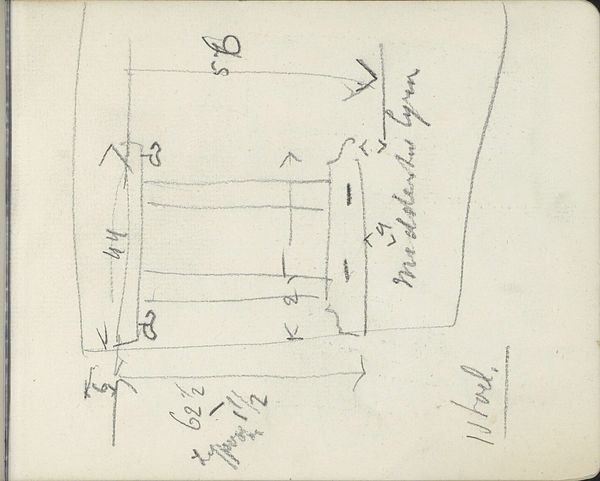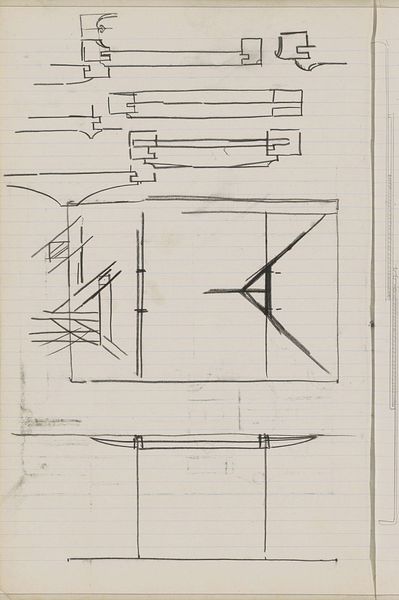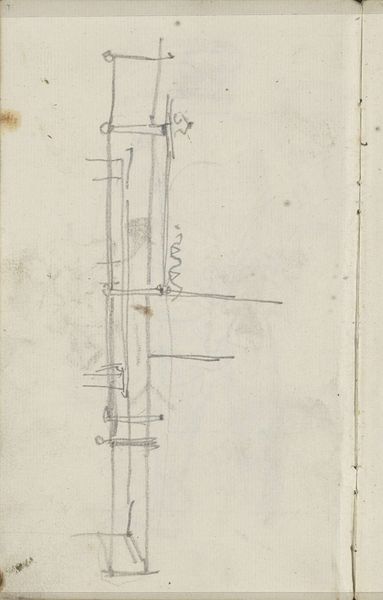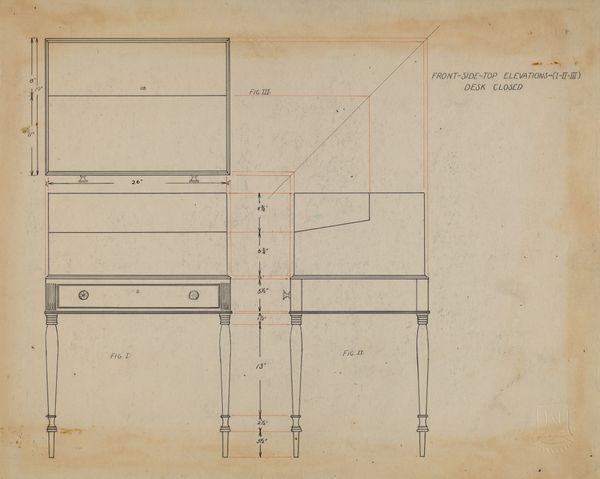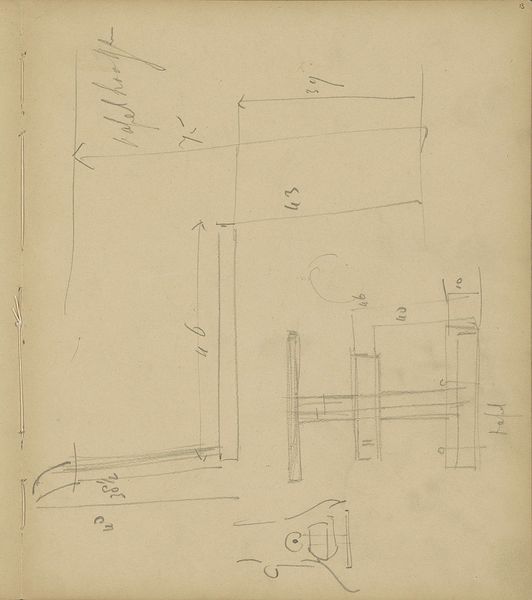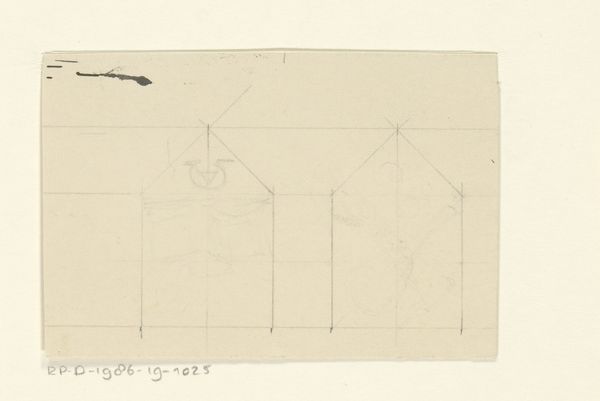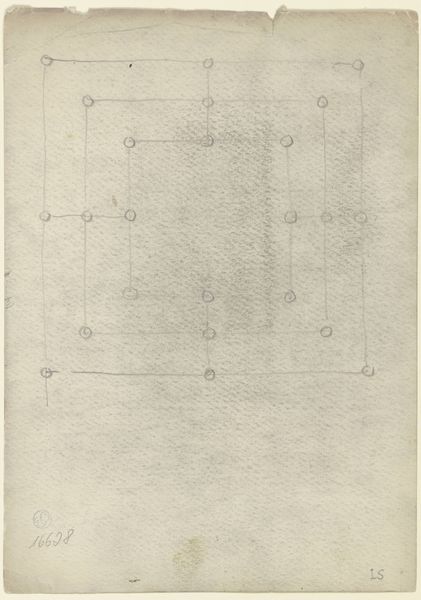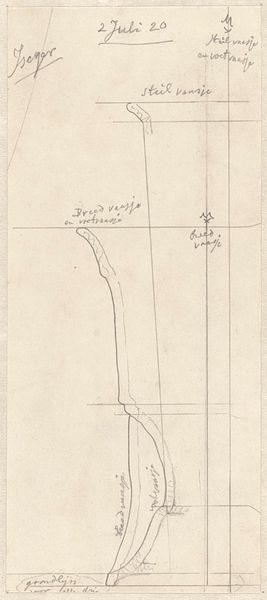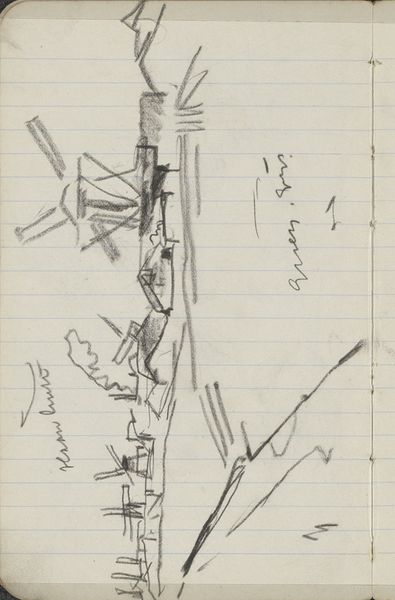
drawing, pencil
#
drawing
#
geometric
#
pencil
#
abstraction
Dimensions: height 219 mm, width 191 mm
Copyright: Rijks Museum: Open Domain
Curator: Immediately, the graphic simplicity grabs me. There's something so stark yet inviting about these lines marching off into… where exactly? Editor: This is "Perspectieftekening," a pencil drawing rendered before 1961 by Hans Borrebach. What we see is, fundamentally, a lesson. It's a perspective drawing— a study, perhaps— in representing three-dimensional space on a two-dimensional plane. The arrows labeled A, B, and C each lead "Naar" (to) a "Verdwunpunt," a vanishing point. Curator: "Vanishing point" – beautiful! It feels melancholy to me. All those assertive lines so deliberately meeting at some unknown point, a point we can’t quite reach... Is that just me projecting? Editor: Not entirely, perhaps. The artist provides a mathematical foundation, yet geometry often reveals or underscores disparities that pervade lived realities. Consider, who gets to control the narrative, the single point-of-view from which we are to accept "objective" truths? The black square too feels somewhat weighty here... Curator: Yes! Like a dark void that sucks away any levity, yet also lends solidity and depth. The hand-drawn quality makes it personal, too, even vulnerable, like a nervous student making diagrams with an enormous eraser nearby. Editor: Exactly. There's a tension there, isn’t there? On one hand, the drawing tries to present mathematical concepts like orthogonal lines and ideal horizon, but those smudges of pencil also make it more approachable and reveal, perhaps unintentionally, how the artist interpreted what is "supposed" to happen in the drawing of perspectival space. Curator: Maybe that’s where the emotional undercurrent lives. Not in some grand existential declaration, but in the subtle wavering of the hand striving to make something exact, perfect… when maybe the beauty lives in the imperfection. Editor: Indeed. Hans Borrebach's diagram pushes us to rethink linear narratives of singular perspectival understanding—how geometry intersects lived experience. The attempt itself becomes the story. Curator: Right—we feel a kind of shared striving toward something just beyond our grasp. A testament to art and how abstraction might communicate deeply intimate human feelings and aspirations.
Comments
No comments
Be the first to comment and join the conversation on the ultimate creative platform.
